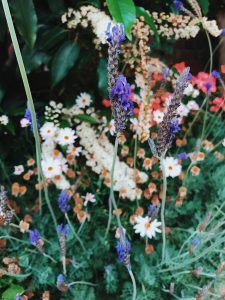The word alone conjures images of vast open fields carpeted in a rainbow of colored flowers and long grasses waving gently in the breeze. Whether you are a ‘plantaholic’ or not, the beauty of wildflowers can’t be denied and many of us wish we could capture that natural landscape in our own gardens. Well, …you can. Even if you don’t have the space to create a ‘meadow’ as such, a ‘mini-meadow’ of wildflowers will have the same strikingly beautiful effect.

How to Grow Wildflowers
Prepping and sowing
Ironically, wildflowers can be finicky when it comes to growing conditions – they prefer to take center stage (as they should) and tend to flourish in poorer dryer soils as this limits the chance of other plants like grasses or weeds growing. Before planting your ‘mixed meadow mix’ of wildflower seeds, make sure the site is clear of all perennial weeds and other plants such as grasses. Churn the soil as you would in preparation for sowing grass seeds and make sure that you sow at the density rate recommended for the mix. The seed mix is usually very low, so mixing it with some dry sand makes sowing easier. Once scattered, rake the seeds gently to help them get settled in.
Weeding and Mowing
It is crucial to remove any weeds that pop as this will deter the wildflowers from growing. Remove all clippings when de-weeding as decaying clippings tend to raise the fertility of the soil, which is not great for the growth of wildflowers. Regular mowing (once every few months throughout the year) is also advised as this prevents the grasses from growing too tall and drowning out the wildflowers, as well as gets rid of tough weeds. Don’t be scared of mowing and ruining the meadow – wildflowers are resilient (as long as there aren’t any weeds around) and will grow back quickly.
Magical Meadows
One of the many beauties about planting your own wildflower meadow or garden is that each year will produce a different look – with some flower species getting the upper hand for a season and then others the next.




